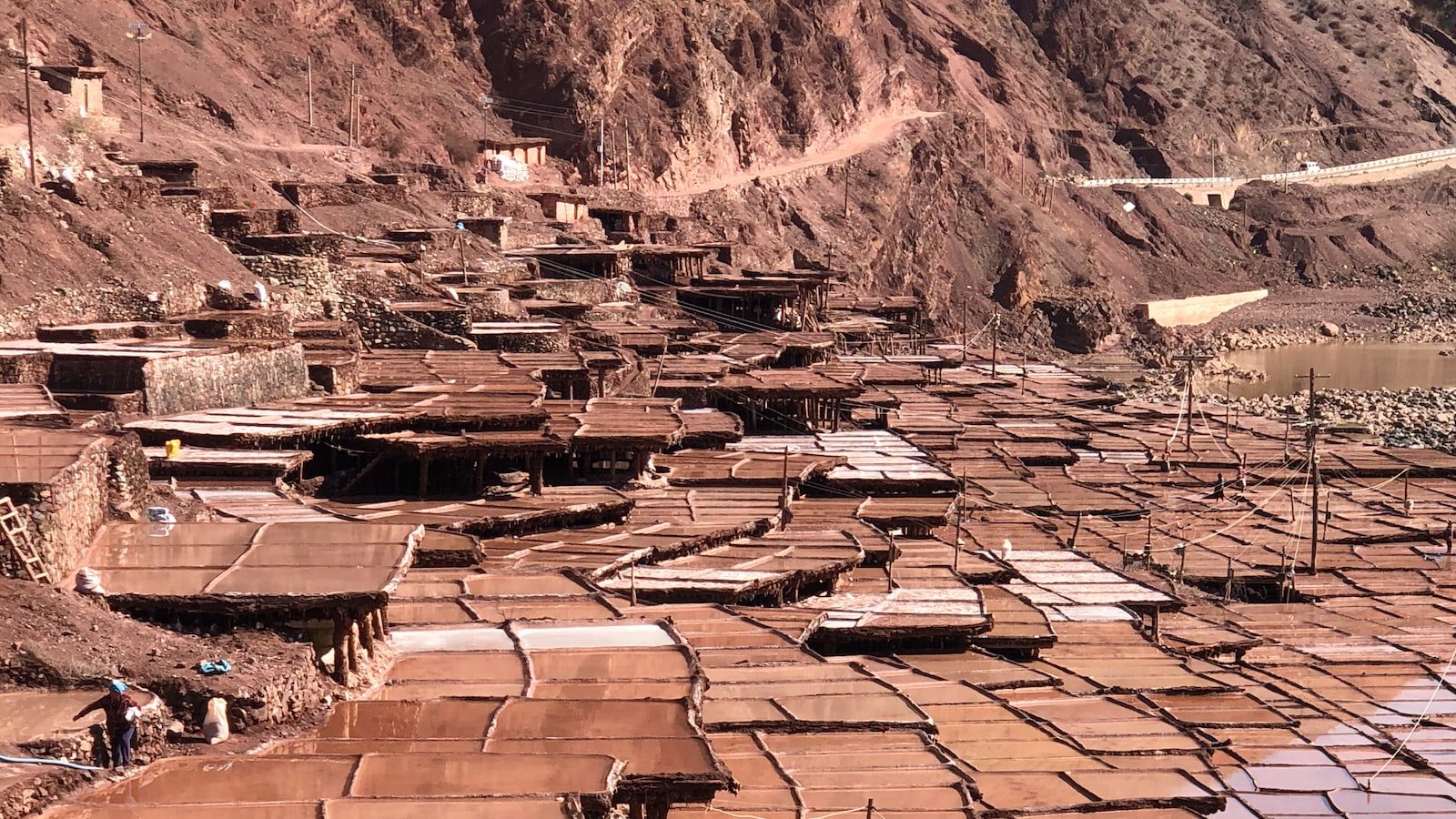Picture this: you find yourself stranded in the vast wilderness, with nothing but your wits and determination to keep you alive. In this unforgiving setting, a well-built survival shelter can mean the difference between life and death. Whether you are an experienced outdoor enthusiast or a novice explorer, mastering the art of constructing a sturdy sanctuary is an essential skill to have. In this ultimate guide, we will take you on a captivating journey, exploring the crucial steps and expert techniques to build a survival shelter that shields you from nature’s harshest elements, providing refuge and a fighting chance to survive. So, get ready to venture into the wild and discover the secrets of building a shelter that rests between you and the unforgiving wilderness.
Table of Contents
- Choosing the Perfect Location for Your Survival Shelter
- Understanding the Key Elements of a Sturdy and Secure Shelter
- Essential Tools and Materials for Building a Survival Shelter
- Expert Techniques for Constructing Various Types of Shelters
- Critical Considerations for Long-Term Shelter Sustainability
- Q&A
- In Retrospect

Choosing the Perfect Location for Your Survival Shelter
When it comes to survival, one of the most crucial factors to consider is the location of your shelter. Selecting the right spot can significantly increase your chances of survival and make all the difference in unpredictable situations. Here are some essential tips to keep in mind:
- Accessibility: Ensure your shelter is easily accessible. Look for a location that is close to a water source, as water is essential for survival. Additionally, proximity to a food source or potential hunting grounds is advantageous.
- Proximity to civilization: While the idea of complete isolation may seem appealing, being reasonably close to civilization can have its advantages. In case of emergencies or potential rescue situations, being in proximity to help or infrastructure can be beneficial.
- Terrain and natural cover: It’s crucial to consider the terrain and natural cover when choosing your shelter location. Look for areas with natural barriers such as hills or dense forest that can provide protection and concealment.
Remember, finding the perfect location for your survival shelter is not something to be taken lightly. Take the time to thoroughly evaluate potential sites and consider all the factors that will contribute to your safety and well-being in the long run.

Understanding the Key Elements of a Sturdy and Secure Shelter
When it comes to building a shelter, whether for survival purposes or simply for everyday living, it’s crucial to ensure that it provides the necessary stability and security. Here are some key elements that should be considered to create a sturdy and secure shelter:
1. Foundation:
An essential element of any strong shelter is a solid foundation. A well-built foundation provides stability, prevents shifting, and protects against moisture infiltration. The use of high-quality materials, such as reinforced concrete or well-compacted soil, helps to ensure long-lasting durability.
2. Robust Frame:
A solid and well-engineered frame is vital for withstanding various environmental factors. Whether using wood, steel, or other materials, the frame should be designed to support the overall structure and resist external pressures, such as strong winds or heavy snow loads. Proper bracing and quality craftsmanship play a significant role in increasing the shelter’s overall strength.
3. Secure Entry Points:
Protecting the inhabitants and belongings inside the shelter requires secure entry points. Reinforced doors and windows with sturdy locks help prevent unauthorized access and potential break-ins. Additionally, considering the type of material used for doors and windows is crucial for withstanding impact, extreme temperatures, and potential natural disasters.
By paying attention to these key elements, you can ensure that your shelter is built to last, providing safety, security, and peace of mind. Remember, a sturdy and secure shelter is an essential foundation for thriving in any situation.

Essential Tools and Materials for Building a Survival Shelter
When it comes to building a survival shelter, having the right tools and materials can make all the difference in ensuring your safety and comfort. Whether you find yourself in the midst of a natural disaster or simply want to be prepared for outdoor adventures, here are some must-have items:
- Tarpaulin or Emergency Blanket: These lightweight and waterproof materials are versatile and can provide instant shelter from rain, wind, or snow. They can be easily folded and compacted, making them essential for any survival kit.
- Rope or Paracord: Having a sturdy rope or paracord is crucial for securing your shelter. From tying knots to creating support structures, it’s the backbone of any make-shift shelter construction.
- Knife or Multi-tool: A reliable knife or multi-tool is indispensable for cutting branches, shaping wood, and general survival tasks. Look for a sharp, durable blade that can withstand rigorous use.
- Fire-starting Tools: Building a fire provides warmth, light, and a means to cook food. Include waterproof matches, a lighter, or fire starter sticks in your emergency kit to ignite a fire quickly and efficiently.
- Insulation and Bedding: Layering your shelter with insulation, such as leaves, grass, or pine needles, can provide additional warmth. Additionally, consider including a lightweight sleeping bag or thermal blanket for a comfortable rest.
Remember, these are just a few essential tools and materials you should have on hand when building a survival shelter. Adaptability and resourcefulness play key roles in making the most out of your surroundings. Stay prepared and stay safe!

Expert Techniques for Constructing Various Types of Shelters
Constructing shelters is an essential skill for survival, whether you’re an avid adventurer or find yourself in an unexpected emergency situation. With expert techniques, you can ensure that you have a safe and durable shelter regardless of the circumstances. Here, we explore a variety of shelters and the key strategies for their construction:
1. Lean-to Shelters:
A classic shelter design, the lean-to provides protection against wind and rain. To construct a lean-to:
- Find a sturdy tree or structure that can serve as one support beam.
- Gather long branches or sturdy sticks.
- Lean the branches against the support beam at an angle, creating a slanted roof.
- Layer foliage or a tarp over the branches for added protection.
2. Debris Huts:
Debris huts are ideal for cold or wet environments. To build a debris hut:
- Find a long, sturdy pole to serve as the ridgepole.
- Arrange a line of taller sticks to create the basic frame.
- Layer smaller sticks, leaves, grass, and other debris over the frame.
- Create an entryway and insulate the interior with additional debris.
3. A-frame Shelters:
A-frame shelters are quick and efficient to build. Follow these steps:
- Find two longer branches and a shorter branch.
- Place the longer branches on the ground, forming an “A” shape.
- Secure the shorter branch horizontally across the top to create the roof.
- Add additional branches or foliage to cover the roof.
These are just a few . Remember to adapt these methods to your specific environment and always prioritize safety. Mastering these skills will ensure you have a reliable shelter wherever your adventures may take you.
Critical Considerations for Long-Term Shelter Sustainability
When it comes to long-term shelter sustainability, there are several crucial factors that must be taken into account. These considerations can greatly impact the success and longevity of any shelter project, ensuring that it remains effective and functional for years to come.
- Location: Choosing an optimal location plays a pivotal role in the sustainability of a long-term shelter. A thorough assessment of factors such as accessibility, proximity to essential services, and potential environmental hazards must be conducted. It is crucial to select a site that offers long-term viability and meets the specific needs of the intended occupants.
- Design: The design of the shelter must prioritize functionality, durability, and adaptability. Employing sustainable construction materials and techniques can enhance the shelter’s resilience against natural disasters, reduce long-term maintenance costs, and lower the environmental impact. Integrating energy-efficient systems, such as solar panels or passive cooling techniques, can contribute to a greener and more sustainable shelter.
- Community Engagement: Ensuring the sustainability of a long-term shelter is not solely dependent on its physical attributes. Engaging the local community and fostering their ownership of the project is crucial. This can be achieved by involving community members in the planning, construction, and management phases, empowering them to take an active role in their own shelter’s sustainability.
By considering these critical factors in the planning and implementation of long-term shelter projects, we can pave the way for sustainable, resilient, and inclusive communities that can withstand the test of time.
Q&A
Q: Why is building a survival shelter important in emergency situations?
A: A survival shelter provides protection from harsh weather conditions, wildlife, and other potential dangers in emergency scenarios. It helps maintain body temperature, preserves energy, and increases the chances of survival.
Q: What are the key factors to consider when choosing a location for a survival shelter?
A: When selecting a location, it’s crucial to consider proximity to water, natural hazards, accessibility to resources, and visibility for potential rescue. Additionally, opt for higher ground to avoid flooding and choose an area with natural materials that can aid in construction.
Q: What materials should be used to build a sturdy survival shelter?
A: The ideal materials for a survival shelter include branches, leaves, large rocks, or fallen trees that are readily available in the surrounding area. Utilizing these natural resources ensures stability, insulation, and camouflage.
Q: Is it possible to construct a survival shelter without prior experience or tools?
A: Absolutely! Basic survival shelters can be built with minimal tools or experience. Utilizing the resources around you, such as leaves, branches, and rocks, can create a simple and effective shelter.
Q: How can one ensure proper ventilation in a survival shelter?
A: Adequate ventilation is crucial to prevent condensation and maintain fresh air inside the shelter. Placing a small opening near the top of the shelter or utilizing natural gaps in the structure allows for air circulation while keeping rain and wind out.
Q: What are some essential tips for maximizing insulation in a survival shelter?
A: To enhance insulation, consider adding a thick layer of leaves, moss, or grass on the interior walls and roof of the shelter. This extra layer acts as a barrier against heat loss and helps maintain a comfortable temperature inside.
Q: Can you provide some suggestions for making a survival shelter more comfortable?
A: Adding bedding, such as dry leaves or pine needles, to the floor of the shelter creates a cushioned surface and helps insulate against cold ground. Additionally, incorporating a raised platform or using a hammock can elevate the sleeping area for extra comfort.
Q: How important is camouflage when constructing a survival shelter?
A: Camouflage plays a vital role in ensuring your shelter goes unnoticed by potential threats. Using natural materials and blending the shelter with the surrounding environment helps avoid detection from wildlife and other potentially dangerous individuals.
Q: What measures should be taken to protect the survival shelter from water damage?
A: To shield the shelter from water damage, it is essential to choose a well-drained location on higher ground. Creating a sloping roof with large leaves or a waterproof tarp also helps prevent leaks, ensuring the inside remains dry and comfortable.
In Retrospect
As we conclude this ultimate guide to building a survival shelter, we hope that these insights and tips have sparked your imagination and equipped you with the skills necessary to face the unknown with confidence. The art of shelter-building is more than just constructing a simple structure; it embodies the resilience of the human spirit and the ingenuity inherent within us all.
Remember, a survival shelter is more than just four walls and a roof; it’s a sanctuary that provides solace and protection in the face of adversity. Whether you find yourself lost in the wilderness, caught in a sudden storm, or in a situation where survival is paramount, the knowledge shared in this guide empowers you to craft a haven amidst uncertainty.
Take these words of guidance and let them resonate as you navigate the untamed landscapes of life. Allow your intuition to guide the materials you choose, as nature is a generous architect. Immerse yourself in the process, and let the act of building shelter become a testament to your resourcefulness and ability to adapt.
Remember, it is not only the physical structure that shapes a survival shelter; it is the strength of your will, the depth of your determination, and the unwavering focus on your ultimate goal. Moments of adversity may test your resolve, but within you lies the resilience to overcome any challenge.
As you venture forth, armed with newfound knowledge and the confidence to construct your own survival shelter, embrace the unknown as an opportunity for growth. The wild is a source of wisdom, ready to bestow its gifts upon those who dare to venture beyond their comfort zone.
So, go forth, fellow adventurers, and let the winds of change carry you to new horizons. May this guide be your compass in times of uncertainty, guiding you to create a sanctuary that not only shelters your body but nourishes your spirit. Remember, when faced with the task of building a survival shelter, it is not just about the destination but the journey itself that shapes your character.
With each shelter you erect, honor the lessons learned and embrace your innate ability to adapt. Cherish the connections forged with the elements and the remarkable strength that dwells within you. Take pride in your newfound skills as you carve your place within the vast tapestry of survival enthusiasts.
As we close this chapter, we implore you to share this knowledge, for what is survival if not the foundation to thrive? Let others benefit from your wisdom and ignite the spark within them. Together, let us embrace the unknown, building not only survival shelters but also a community bound by the spirit of preparation, resilience, and the relentless pursuit of adventure.
In unity and preparedness, may your survival shelters stand as monuments to human ingenuity, reminding us all of our primal connection to nature and our unwavering will to endure.
As an affiliate, my content may feature links to products I personally use and recommend. By taking action, like subscribing or making a purchase, you’ll be supporting my work and fueling my taco cravings at the same time. Win-win, right?
Want to read more? Check out our Affiliate Disclosure page.